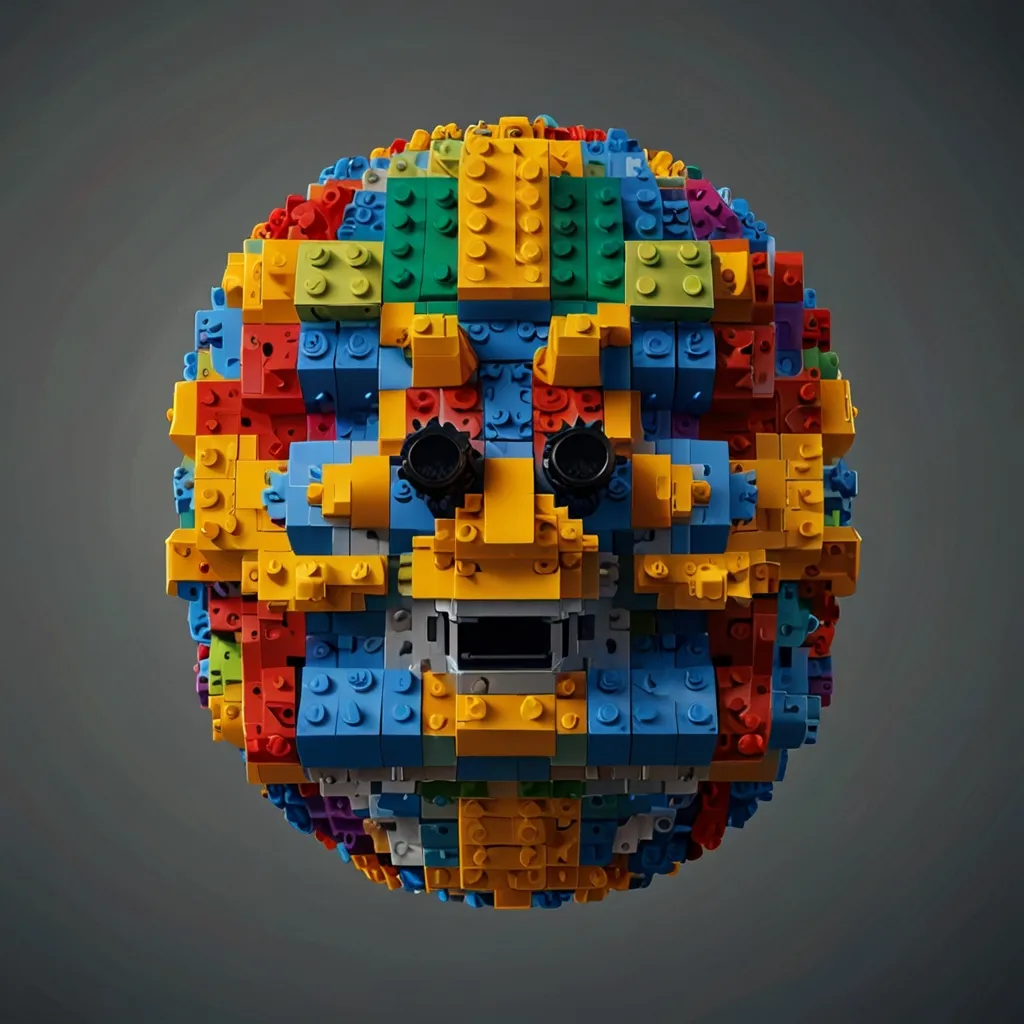React has revolutionized how we build web apps, and now it’s time to take things up a notch with Progressive Web Apps (PWAs). These bad boys combine the best of both worlds - the reach of the web and the functionality of native apps. Let’s dive into how you can create a killer PWA using React and service workers.
First things first, what even is a PWA? It’s basically a web app on steroids. It loads fast, works offline, and can be installed on your device like a regular app. Pretty neat, right?
To get started, you’ll need to have React set up. If you’re new to React, don’t sweat it. Just use Create React App - it’s like a magic wand for setting up React projects. Open up your terminal and type:
npx create-react-app my-pwa
cd my-pwa
npm start
Boom! You’ve got a basic React app up and running. Now, let’s turn this into a PWA.
The secret sauce of PWAs is service workers. These little guys run in the background and handle things like caching and push notifications. Lucky for us, Create React App comes with a pre-configured service worker. To enable it, open up your src/index.js file and change:
serviceWorker.unregister();
to:
serviceWorker.register();
Just like that, you’ve got a service worker running! But we’re not done yet. To make your app truly progressive, you need a manifest file. This tells the browser how your app should behave when installed. Create React App generates a basic manifest for you, but let’s jazz it up a bit.
Open public/manifest.json and customize it:
{
"short_name": "My PWA",
"name": "My Awesome Progressive Web App",
"icons": [
{
"src": "favicon.ico",
"sizes": "64x64 32x32 24x24 16x16",
"type": "image/x-icon"
},
{
"src": "logo192.png",
"type": "image/png",
"sizes": "192x192"
},
{
"src": "logo512.png",
"type": "image/png",
"sizes": "512x512"
}
],
"start_url": ".",
"display": "standalone",
"theme_color": "#000000",
"background_color": "#ffffff"
}
Now your app has an identity. But what about offline functionality? That’s where caching comes in. The default service worker caches your app shell, but let’s add some custom caching.
Create a new file src/serviceWorker.js (if it doesn’t exist already) and add:
const CACHE_NAME = 'my-pwa-cache-v1';
const urlsToCache = [
'/',
'/index.html',
'/static/js/bundle.js',
'/static/js/main.chunk.js',
'/static/js/0.chunk.js',
'/static/css/main.chunk.css',
];
self.addEventListener('install', (event) => {
event.waitUntil(
caches.open(CACHE_NAME)
.then((cache) => cache.addAll(urlsToCache))
);
});
self.addEventListener('fetch', (event) => {
event.respondWith(
caches.match(event.request)
.then((response) => response || fetch(event.request))
);
});
This code caches important files and serves them from the cache when possible. Your app can now work offline!
But wait, there’s more! Let’s add some PWA goodness to your React components. How about an install prompt? Create a new component:
import React, { useState, useEffect } from 'react';
const InstallPWA = () => {
const [supportsPWA, setSupportsPWA] = useState(false);
const [promptInstall, setPromptInstall] = useState(null);
useEffect(() => {
const handler = (e) => {
e.preventDefault();
setSupportsPWA(true);
setPromptInstall(e);
};
window.addEventListener('beforeinstallprompt', handler);
return () => window.removeEventListener('beforeinstallprompt', handler);
}, []);
const onClick = (evt) => {
evt.preventDefault();
if (!promptInstall) {
return;
}
promptInstall.prompt();
};
if (!supportsPWA) {
return null;
}
return (
<button
className="link-button"
id="setup_button"
aria-label="Install app"
title="Install app"
onClick={onClick}
>
Install
</button>
);
};
export default InstallPWA;
Now you’ve got an install button that only shows up when the app can be installed. Pretty slick!
Let’s not forget about push notifications. They’re a great way to keep users engaged. First, you’ll need to set up a backend server to handle sending notifications. For simplicity, let’s use Firebase Cloud Messaging (FCM).
Install the firebase package:
npm install firebase
Then, initialize Firebase in your app:
import firebase from 'firebase/app';
import 'firebase/messaging';
const firebaseConfig = {
// Your Firebase config here
};
firebase.initializeApp(firebaseConfig);
const messaging = firebase.messaging();
Now, let’s create a component to handle push notification subscription:
import React, { useState } from 'react';
import firebase from 'firebase/app';
const PushNotification = () => {
const [isSubscribed, setIsSubscribed] = useState(false);
const subscribeToNotifications = async () => {
try {
const messaging = firebase.messaging();
await messaging.requestPermission();
const token = await messaging.getToken();
console.log('FCM Token:', token);
// Send this token to your server
setIsSubscribed(true);
} catch (error) {
console.error('Error subscribing to notifications:', error);
}
};
return (
<button onClick={subscribeToNotifications}>
{isSubscribed ? 'Subscribed to Notifications' : 'Subscribe to Notifications'}
</button>
);
};
export default PushNotification;
This component allows users to subscribe to push notifications. Remember to handle the token on your server and use it to send targeted notifications.
Now, let’s talk about performance. PWAs need to be fast, like really fast. React’s got your back with code splitting. Instead of loading your entire app at once, you can split it into smaller chunks and load them on demand.
Here’s how you can use React.lazy and Suspense to implement code splitting:
import React, { Suspense, lazy } from 'react';
import { BrowserRouter as Router, Route, Switch } from 'react-router-dom';
const Home = lazy(() => import('./routes/Home'));
const About = lazy(() => import('./routes/About'));
const Contact = lazy(() => import('./routes/Contact'));
const App = () => (
<Router>
<Suspense fallback={<div>Loading...</div>}>
<Switch>
<Route exact path="/" component={Home}/>
<Route path="/about" component={About}/>
<Route path="/contact" component={Contact}/>
</Switch>
</Suspense>
</Router>
);
This setup loads each route component only when it’s needed. Your initial load time will thank you!
Another cool PWA feature is the ability to work with the device’s hardware. Let’s say you want to access the user’s camera. You can use the MediaDevices API:
import React, { useState, useRef } from 'react';
const Camera = () => {
const videoRef = useRef(null);
const [hasPhoto, setHasPhoto] = useState(false);
const getVideo = () => {
navigator.mediaDevices
.getUserMedia({ video: { width: 300, height: 300 } })
.then(stream => {
let video = videoRef.current;
video.srcObject = stream;
video.play();
})
.catch(err => {
console.error("error:", err);
});
};
const takePhoto = () => {
const width = 300;
const height = 300;
let video = videoRef.current;
let canvas = document.createElement('canvas');
canvas.width = width;
canvas.height = height;
let ctx = canvas.getContext('2d');
ctx.drawImage(video, 0, 0, width, height);
setHasPhoto(true);
};
return (
<div className="camera">
<video ref={videoRef}></video>
<button onClick={getVideo}>Start Camera</button>
<button onClick={takePhoto}>Take Photo</button>
{hasPhoto && <p>Photo taken!</p>}
</div>
);
};
export default Camera;
This component allows users to access their camera and take a photo. It’s a simple example, but it shows how PWAs can interact with device features.
Now, let’s talk about app updates. One of the cool things about PWAs is that they can update in the background. But you should let your users know when an update is available. Here’s a component to handle that:
import React, { useState, useEffect } from 'react';
const UpdatePrompt = () => {
const [showReload, setShowReload] = useState(false);
useEffect(() => {
// Check for service worker updates
if ('serviceWorker' in navigator) {
navigator.serviceWorker.ready.then(registration => {
registration.addEventListener('updatefound', () => {
const newWorker = registration.installing;
newWorker.addEventListener('statechange', () => {
if (newWorker.state === 'installed') {
setShowReload(true);
}
});
});
});
}
}, []);
const reloadPage = () => {
window.location.reload();
};
if (!showReload) return null;
return (
<div className="update-prompt">
<p>A new version of this app is available!</p>
<button onClick={reloadPage}>Reload</button>
</div>
);
};
export default UpdatePrompt;
This component checks for service worker updates and prompts the user to reload when a new version is available.
Lastly, let’s talk about app shell architecture. This is a design pattern that separates the core app infrastructure and UI from the data. It’s like the skeleton of your app that loads instantly and then populates with data.
Here’s a basic example of how you might structure your app using the app shell model:
import React, { Suspense, lazy } from 'react';
import { BrowserRouter as Router, Route, Switch } from 'react-router-dom';
import Header from './components/Header';
import Footer from './components/Footer';
import Loading from './components/Loading';
const Home = lazy(() => import('./routes/Home'));
const About = lazy(() => import('./routes/About'));
const Contact = lazy(() => import('./routes/Contact'));
const App = () => (
<Router>
<div className="app-shell">
<Header />
<main>
<Suspense fallback={<Loading />}>
<Switch>
<Route exact path="/" component={Home}/>
<Route path="/about" component={About}/>
<Route path="/contact" component={Contact}/>
</Switch>
</Suspense>
</main>
<Footer />
</div>
</Router>
);
export default App;
In this setup, the Header and Footer components are part of the app shell and will load immediately. The route components are loaded on demand.
And there you have it! You’ve just created a fully-fledged PWA using React. It’s fast, it works offline, it can be installed, and it even sends push notifications. Plus, it






